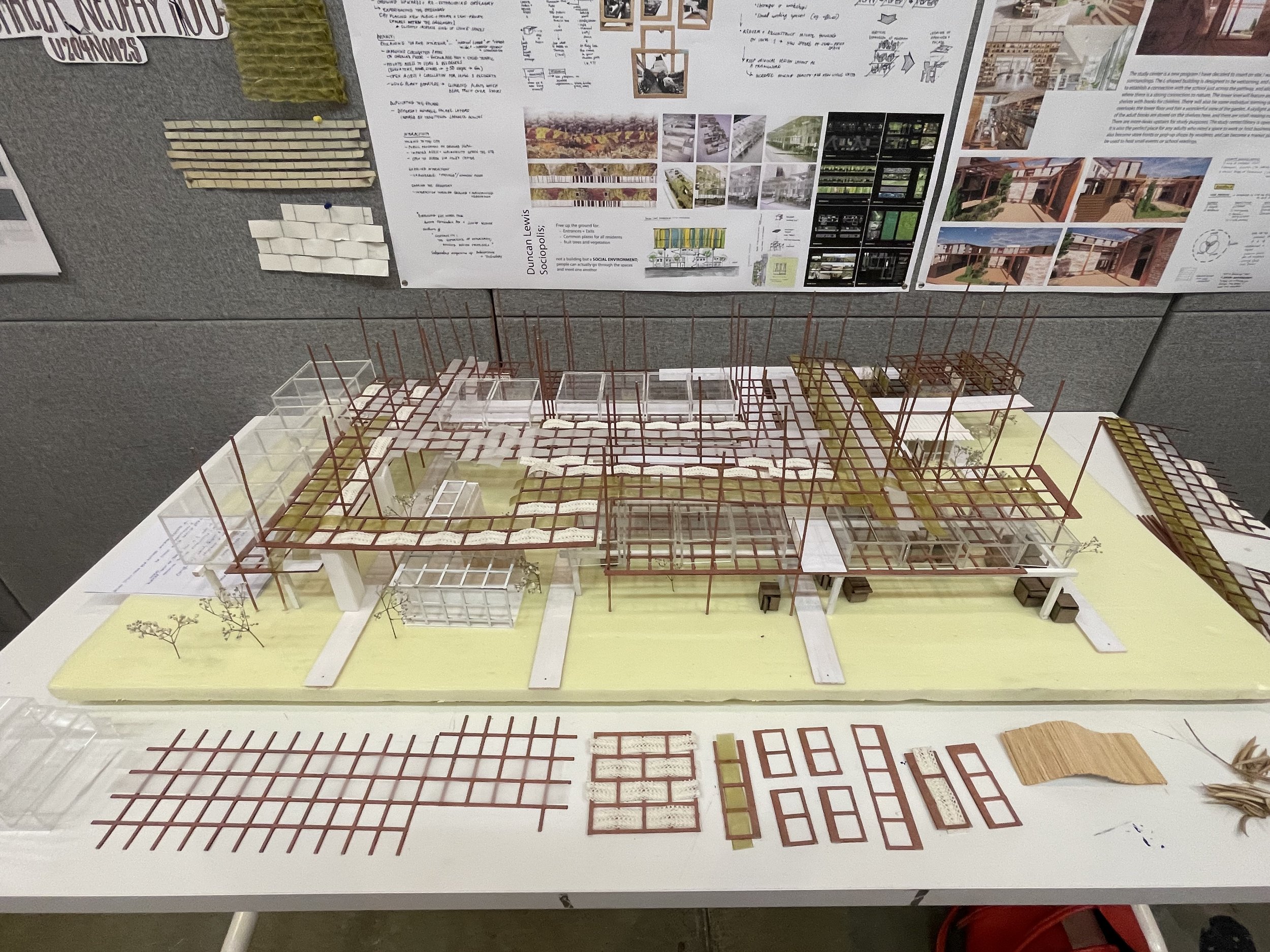ARCH 401-2 & 501-2 - Fall 2023/Spring 2024
Tutors:
Maria Hadjisoteriou, Architect, Associate Professor, University of Nicosia
Alessandra Swiny, Architect, Associate Professor, University of Nicosia
Teresa Tourvas,
“Our society is transforming, our cities are shifting, and our lives are continually in a state of flux. Most of us have become transients, even nomadic in nature, uprooted from our "origins" we reside in many different cities, countries throughout our lifetime.”
Osvaldo Sanchez
The unit’s core investigation focuses on the topic of the UNSETTLED, as it is understood in the context of spatial displacement, forced by social, economic, political, environmental or other conditions.
The Unit will address the topic and its spatial implications, examining communities placed in a state of vulnerability due to conditions, such as fractured social systems, communities and environmental and/or economic crisis. Key juxtapositions will shed new light on the strategies and coalitions needed for city making, while at the same time, the Unit will aim at raising awareness in understanding the user, not as a generic person or condition but will highlight diversity and the necessary conditions for different individuals to co-inhabit and co-appropriate the city.
By focusing on design for people with different needs but also different kinds of abilities, or disabilities, impairment [elderly people, kids, people with limited mobility, vision, hearing etc.] the process will allow us to expand beyond ‘generic’ architectural space to specific and unique spatial, architectural and urban proposals of inclusion, places of appropriation, and engagement Thus, arriving at a new architectural understanding of places, where specific groups of people do not have to live by themselves, in isolation, but rather, it will allow them to become equal social actors that influence the way space should be designed.
Seeking new design possibilities through both theoretical and design-based speculations, the studio also promotes ideas of sustainability, based on remaking and reusing existing resources, re-informing the designer’s repertoire, and re-envisioning our living environment.
The studio will eventually address the potential for architecture and the built environment to support and strengthen communities of unsettled populations, on a unique condition of a refugee settlement of Aspres in Nicosia, Cyprus.
‘Aspres’, is one of the 69 refugee housing estates designed in the late 1970’s to house over 60,000 displaced people moving from the North to the South of Cyprus following the Turkish invasion in 1974.
Working with the refugee housing estate of ‘Aspres,’ focusing on a fractured community that was violently displaced from their previous social structure, prompted us to explore ways of identifying, recording, and proposing new ways of restoring a sense of belonging among its inhabitants.
A Site for Action
The Architectural Studio Unit 9: ‘Unsettled’ approaches the topic framed around displacement, the commons, home, and spatial practices within the context of social housing estates. The studio delves into diverse topics, keeping the lens of Randall Teal in mind, “to discover the richness of ‘place’ through architecture, the designer must engage with the specificities of culture, location, and experience that make up everyday existence”, [Teal 2008, p.144]. The following research thematics are explored: inclusivity (removing physical/social barriers, integrating varied users into society); environment (current climate crisis/change, limited resources, pollution, soil health); hybridity (as a cultural process); identity (memory, issues around displacement, belonging, (im)permanence, boundaries, ownership) and the notion of urban commons (collective processes such as cultivation, gardening, food production, small scale economies and creative spatial expressions).
The Unit explores new urban processes that challenge the privatization of public and shared space, focusing on how design can create opportunities for the collective body to interact and relate to one another, as well as create new cultural spaces and traditions. Henri Lefebvre's argument is expanded upon, “the dynamics of the social space require a dissolution of architecture into a momentary enjoyment...an ephemeral situation created by activities of groups that are themselves ephemeral” [Lefebvre 2014, p.56], resulting in a sense of empowerment of the affected body.

